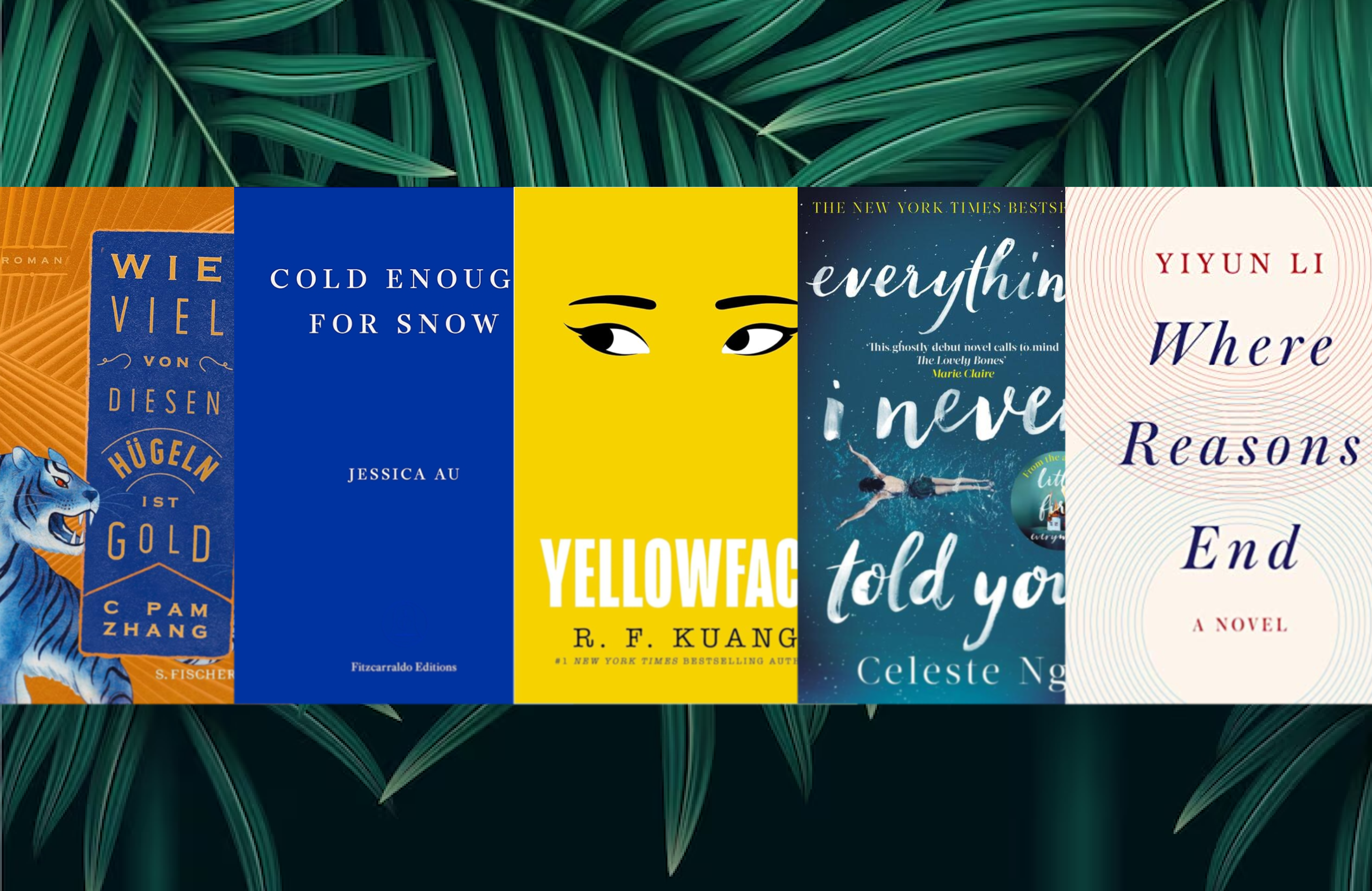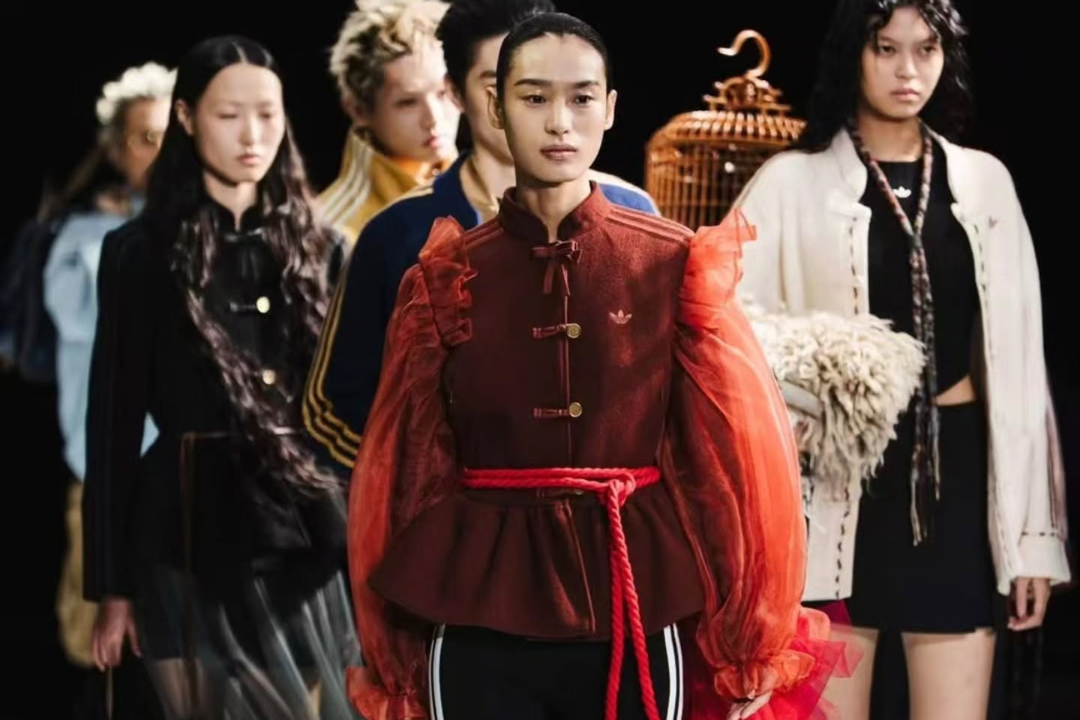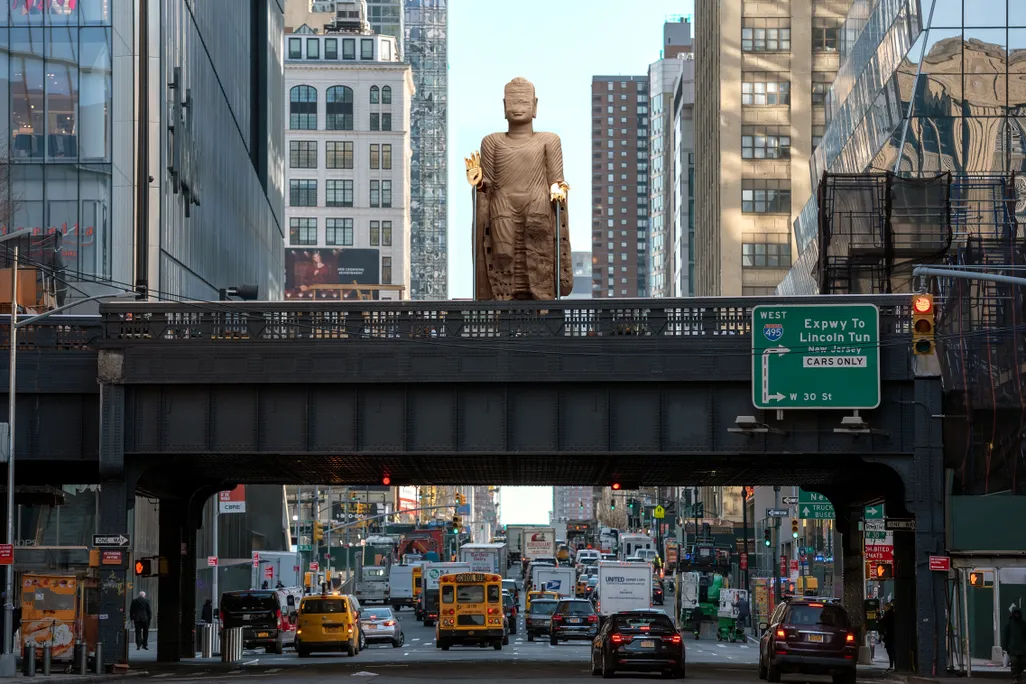No small amount has been written about how 2020 changed many industries — for better and for worse. As fashion weeks and brick-and-mortar retail screeched to a halt, the Covid-19 pandemic has posed a challenge for the fashion industry’s survival in most countries. But then, not many countries are China.
As the country grappled with shockwaves from the initial outbreak in Wuhan, Shanghai became the first city to ever pull off an all-online fashion week. Both fashion labels and their buyers adjusted to new working and living styles, swapped clothes with their significant others, and made once-mocked trends “cool” again.
Related:
 Shanghai’s All-Online Fashion Week in Response to Coronavirus is a “Worldwide First”Originally postponed over coronavirus fears, Shanghai Fashion Week instead opted to stream all of its AW20 shows onlineArticle Mar 24, 2020
Shanghai’s All-Online Fashion Week in Response to Coronavirus is a “Worldwide First”Originally postponed over coronavirus fears, Shanghai Fashion Week instead opted to stream all of its AW20 shows onlineArticle Mar 24, 2020
From virtual idols to eco-friendly fashion labels, here are some of the trends we’ve seen impact Chinese fashion this year.
Embracing Digital
From Zoom conferences to streamed concerts, industries worldwide have had to embrace digital platforms to stay afloat. Given the built-in digital ecosystem that it had begun experimenting with in seasons past, it made sense that Shanghai would be poised to launch what it claimed was the world’s first all-online fashion week in spring. Designers turned to pre-recorded videos, interactive events, and livestreamed shows hosted on Chinese ecommerce giant TMall, and made the week a total of 20 million RMB (2.82 million USD) via TMall’s “see now, buy now” model.
In keeping with the all-digital theme, virtual models and idols also became a more noticeable trend. TMall renewed its existing virtual influencer, Aimèe, for its all-online Shanghai Fashion Week, and months later, members of League of Legends virtual girl group K/DA made an “appearance” at Shanghai Fashion Week. The idol trend arguably hit its peak when TMall branched out into non-humans, debuting virtual cat trio Xingxiu Meow (星秀Meow) for its annual 11.11 shop-a-thon in November.

Members of K/DA at Shanghai Fashion Week (image: Weibo)
Another notable crossover from the art to the fashion world was when Doku — a creation of digital artist Lu Yang — became the breakdancing virtual spokesmodel for sportswear brand Li-Ning.
Related:
 Artist Lu Yang’s Virtual Human “Doku” Hits Paris Fashion Week with Li-NingLu Yang’s “digital reincarnation” is starring in a virtual presentation for Chinese sportswear brand Li-NingArticle Sep 28, 2020
Artist Lu Yang’s Virtual Human “Doku” Hits Paris Fashion Week with Li-NingLu Yang’s “digital reincarnation” is starring in a virtual presentation for Chinese sportswear brand Li-NingArticle Sep 28, 2020
Casual Comfort
As people spent the first half of 2020 on lockdown or working from home, comfort unsurprisingly became a theme in people’s daily wear. As “stay at home” related topics surged to the top of Chinese social media during the first few months of the outbreak, fashion and lifestyle brands such as The Beast launched “stay at home” outfit contests and campaigns to tap a nation of stay-at-home fashionistas.
The “homeleisure” trend more or less amplified the existing popularity of athleisure and sportswear, which parallels the increase in young people embracing an active lifestyle. Ecommerce platform Suning reported that sportswear saw a double digit surge during this year’s 11.11 shopping festival, while sales of popular yoga clothing labels quadrupled, according to data provided by competitor JD.com. And with more domestic lingerie brands such as Neiwai gaining viral popularity, young women are also opting for comfort both inside and out — in their undergarments as well as outerwear.
Related:
 Why Chinese Lingerie Buyers are Trying on a Different Definition of “Sexy”Chinese consumers have rallied around viral campaigns for two rival lingerie brands aiming to redefine “sexiness”Article Sep 28, 2020
Why Chinese Lingerie Buyers are Trying on a Different Definition of “Sexy”Chinese consumers have rallied around viral campaigns for two rival lingerie brands aiming to redefine “sexiness”Article Sep 28, 2020
“Too Cool” China
Seemingly in response to years of Western brands defining “cool,” more designers are tapping into past decades of Chinese fashion with fresh eyes. Designers such as multi-hyphenate Princess Butterfly (Hudie Gongzhu, 蝴蝶公主) and Beijing-based label MARRKNULL evoke the aesthetics that defined the ‘90s and ‘00s — bedazzled, ostentatious looks that were not long ago lambasted, but are now points of pride.

Looks from MARRKNULL’s AW20 collection (image: courtesy MARRKNULL)
MARRKNULL co-founder Wei Wang told RADII in a 2020 interview that he saw Chinese contemporary aesthetics as “very inclusive,” adding that they mixed a “nostalgia” for the past with elements of foreign cultures. It’s worth noting that the label offsets the throwback elements with more contemporary tailoring and silhouettes — a trend we’re likely to see more of going forward.
Related:
 China Designers: How This Label Channels Big Chinese Auntie EnergyBeijing-based fashion label MARRKNULL makes social commentary about China’s rapid developmentArticle Aug 04, 2020
China Designers: How This Label Channels Big Chinese Auntie EnergyBeijing-based fashion label MARRKNULL makes social commentary about China’s rapid developmentArticle Aug 04, 2020
Sister Act
In July of this year, the top search keyword on ecommerce platform Taobao was “mengmei style” (猛妹风) or “fierce sister style.” Jing Daily reports that female shoppers have defined the term as clothes that exemplify “cross-gender” style, and laud actress Wan Qian, star of the hit TV show Sisters Who Make Waves as the face of this new fashion trend.
Gender-swapped clothing has been a growing trend in online shopping for a few years — a 2019 Taobao report claimed that more women would shop for boyfriend jeans, blazers, and other menswear looks in the year to come. This has also been the ongoing modus operandi for a number of unisex labels in the independent design world, some of whom say that their buyers are what gave them the idea to make gender-neutral fashion in the first place.
Going Green(er)
As its offline events resumed, sustainability once again became an underlying theme at this fall’s Shanghai Fashion Week. Established designers expressed a renewed commitment to sustainability through recycling, upcycling, and sustainably sourced materials in their collections, and newcomers such as Shie Lyu made noteworthy debuts with labels made from all recycled materials.
Related:
 Meet the Designer Whose Upcycled Garments Dazzled Shanghai Fashion WeekWhen Covid-19 changed designer Shie Lyu’s travel plans, she made her Fashion Week debut insteadArticle Nov 17, 2020
Meet the Designer Whose Upcycled Garments Dazzled Shanghai Fashion WeekWhen Covid-19 changed designer Shie Lyu’s travel plans, she made her Fashion Week debut insteadArticle Nov 17, 2020
Organizers seemed to make it a conscious theme as well, according to WWD, by hosting what they called a “material utopia exhibition” featuring several of their major suppliers’ cutting-edge sustainable textiles. “We’ve been talking about sustainability for a long time,” Xiaowei Lv, vice secretary-general of the committee, said of the exhibition. “The goal of making such an exhibition is to evoke the designers’ imagination of materials that can be used […] in the next season’s design.” That same week also saw Italy’s Green Carpet Fashion Awards make its China debut.
As fast fashion presents an increasing number of environmental problems — in China, it generated 26 million tons of clothing waste this year alone — buyers and designers alike are beginning to re-examine their contributions on a smaller scale. (This also helps explain the recent growth of China’s secondhand market.)
Yet as designer Lowe Tong pointed out in a 2020 interview, there are still hurdles for sustainable labels to reach the mass market in China. And as leading sustainability advocate Shawey Yeh highlighted during a panel discussion at the Green Carpet Fashion Awards, we don’t have much time left.
Enter the Matrix
A period of relative immobility, with only phone and computer screens for company, has seemingly gotten China’s young people thinking about what their future may look like. Everyone from Wang Yibo and TFBoys member Wang Yuan to Kris Wu appeared wearing futuristic (or retro-futuristic) fashion for GQ Men and Vision magazines, as well as coveted Korean eyewear brand Gentle Monster. Meanwhile, Zhu Jingxi brought the cyberpunk aesthetic to a mainstream audience on the hit TV show Sisters Who Make Waves.

Sisters Who Make Waves star Zhu Jingxi (image: Weibo)
But a penchant for futurism isn’t all that surprising — or new — if you’ve witnessed the rapid socioeconomic changes that most Chinese millennials and “Gen-Z” have. “Coming of age in a post-Communist ‘80s or ‘90s era of development,” wrote Jing Zhang in 2017 for NowFashion, “means their environments are more defined by tall, gleaming skyscrapers, social media, screens, and neon lights than anything else.”
In short: Cyberpunk 2077 doesn’t necessarily feel all that futuristic for many young urban-dwellers in China.
Luxury’s Last Refuge
With billions of dollars in losses, the pandemic has threatened to decimate the luxury market. And as China’s economy began to recover after months of lockdown and job loss, the country has proven to be one of the only bright spots for the sector.
In fact, mainland China’s luxury market is projected to surge 45% this year to 52.21 billion USD, according to Bain’s 2020 Fall Luxury report. Unable to travel internationally, buyers are instead flocking to duty-free regions such as the island of Hainan to stock up on luxury purchases.
Related:
 Why China’s Self-Starter “Daigou” Personal Shoppers are Sending Luxury Brand Stocks TumblingArticle Oct 22, 2018
Why China’s Self-Starter “Daigou” Personal Shoppers are Sending Luxury Brand Stocks TumblingArticle Oct 22, 2018
So what does this mean for China’s infamous daigou shoppers? Though this has also decimated their means of money-making, some are making the most of travel restrictions by sticking to local shores as well.
Additional reporting: Siyuan Meng
















